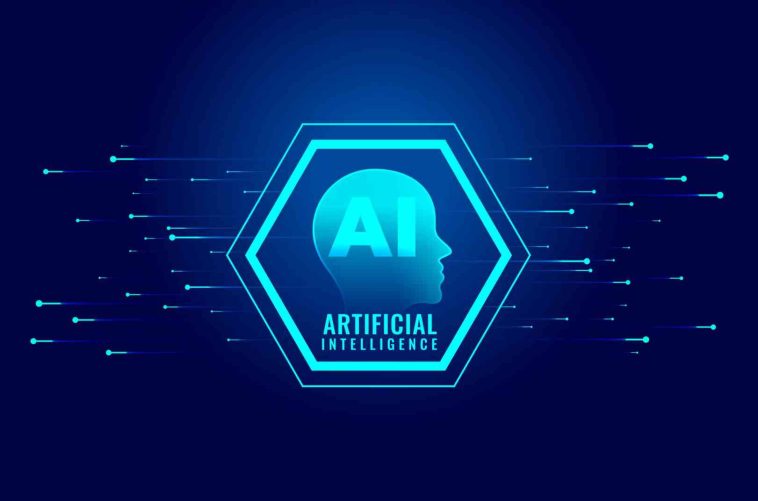As we approach 2025, the field of artificial intelligence continues to evolve at an unprecedented pace, reshaping industries and transforming the way we live and work. AI consulting has become an essential service for businesses looking to harness the power of these cutting-edge technologies. Leading AI consulting companies, such as Aristek, are at the forefront of guiding organizations through the complex landscape of AI implementation and strategy.
In this comprehensive exploration of AI development trends for 2025, we’ll delve into the key areas that are poised to make significant impacts across various sectors. From advances in natural language processing to breakthroughs in quantum computing for AI, these trends are set to redefine the boundaries of what’s possible in the realm of artificial intelligence.
1. Hyper-personalization through AI
As we move into 2025, AI systems will become increasingly adept at delivering highly personalized experiences across various domains. This trend will be particularly evident in areas such as:
a) E-commerce and retail: AI algorithms will analyze vast amounts of data to provide tailored product recommendations, customized pricing strategies, and personalized marketing campaigns.
b) Healthcare: Personalized treatment plans based on individual genetic profiles, lifestyle factors, and medical history will become more commonplace, improving patient outcomes and reducing healthcare costs.
c) Education: Adaptive learning systems will create customized curricula for students, adjusting in real-time based on their progress and learning style.
Aristek, a leader in AI consulting, is helping businesses implement these hyper-personalization strategies to enhance customer engagement and drive growth.
2. Advancements in natural language processing (NLP)
Natural language processing is set to reach new heights in 2025, with AI systems demonstrating an unprecedented understanding of human language nuances. Key developments in this area include:
a) Multilingual AI: Systems capable of seamlessly translating and understanding multiple languages in real-time, breaking down language barriers in global communication.
b) Emotion recognition: AI that can detect and respond to human emotions through text and voice analysis, enhancing customer service and human-computer interactions.
c) Context-aware language models: AI that understands and generates human-like text with a deeper grasp of context, idioms, and cultural references.
3. Ethical AI and responsible development
As AI becomes more pervasive, there will be an increased focus on developing ethical AI systems and ensuring responsible AI practices. This trend will manifest in several ways:
a) Bias detection and mitigation: Advanced algorithms to identify and reduce biases in AI decision-making processes, particularly in sensitive areas like hiring, lending, and criminal justice.
b) Explainable AI (XAI): Greater emphasis on developing AI systems that can provide clear explanations for their decisions and actions, increasing transparency and trust.
c) AI governance frameworks: The establishment of robust governance structures and guidelines for AI development and deployment, with companies like Aristek playing a crucial role in helping organizations navigate these complex ethical landscapes.
4. Edge AI and distributed intelligence
The push towards edge computing will continue to gain momentum in 2025, bringing AI capabilities closer to the source of data generation. This trend will be characterized by:
a) AI-powered IoT devices: Smart devices with built-in AI capabilities, enabling real-time decision-making without relying on cloud connectivity.
b) Federated learning: Distributed AI models that can learn from decentralized data sources while maintaining data privacy and reducing bandwidth requirements.
c) 5G-enabled AI applications: The widespread adoption of 5G networks will unlock new possibilities for AI applications requiring high-speed, low-latency data processing.
5. AI-augmented creativity and content creation
In 2025, we’ll see AI playing an increasingly significant role in creative processes and content generation:
a) AI-assisted design: Advanced generative AI models will help designers and artists create unique visual content, from graphic designs to 3D models and architectural plans.
b) Automated content creation: AI systems capable of generating high-quality written content, including news articles, marketing copy, and even creative fiction.
c) AI in music and film production: AI algorithms assisting in music composition, video editing, and special effects creation, streamlining the production process in the entertainment industry.
6. Quantum computing for AI
The intersection of quantum computing and AI is expected to yield groundbreaking results by 2025:
a) Quantum machine learning algorithms: Development of new machine learning algorithms that leverage the power of quantum computers to solve complex optimization problems.
b) Quantum-enhanced neural networks: Neural networks that utilize quantum principles to achieve unprecedented levels of performance and efficiency.
c) Simulation of complex systems: Quantum AI systems capable of simulating highly complex biological, chemical, and physical systems with applications in drug discovery, materials science, and climate modeling.
7. AI in cybersecurity
As cyber threats become increasingly sophisticated, AI will play a crucial role in bolstering cybersecurity measures:
a) Predictive threat intelligence: AI systems that can anticipate and prevent cyber attacks before they occur by analyzing vast amounts of data and identifying patterns.
b) Automated incident response: AI-powered security systems capable of detecting, analyzing, and responding to security incidents in real-time without human intervention.
c) AI-driven penetration testing: Advanced AI models that can simulate complex cyber attacks to identify vulnerabilities in an organization’s security infrastructure.
8. Advancements in computer vision
Computer vision technologies will continue to evolve, opening up new possibilities across various industries:
a) 3D scene understanding: AI systems capable of creating detailed 3D models of environments from 2D images or video footage, with applications in autonomous vehicles, robotics, and augmented reality.
b) Medical imaging analysis: AI-powered diagnostic tools that can detect and analyze medical conditions from various imaging modalities with human-level accuracy or better.
c) Visual question answering: AI systems that can understand and respond to complex questions about images and video content, enhancing accessibility and information retrieval.
9. AI in scientific discovery and research
Artificial intelligence will increasingly be leveraged to accelerate scientific research and discovery:
a) Drug discovery and development: AI models that can predict drug efficacy and potential side effects, significantly reducing the time and cost of bringing new treatments to market.
b) Climate modeling and environmental research: Advanced AI systems capable of processing vast amounts of climate data to generate more accurate predictions and inform policy decisions.
c) Particle physics and astronomy: AI algorithms assisting in the analysis of data from particle accelerators and telescopes, helping to uncover new insights about the universe.
10. Human-AI collaboration
As AI systems become more advanced, we’ll see a shift towards more seamless collaboration between humans and AI:
a) AI-powered virtual assistants: Sophisticated digital assistants capable of handling complex tasks and engaging in natural conversations across multiple domains.
b) Augmented intelligence in the workplace: AI tools that enhance human decision-making and creativity rather than replacing human workers entirely.
c) Brain-computer interfaces: Early-stage development of technologies that allow direct communication between the human brain and AI systems, opening up new possibilities for human-AI interaction.
Conclusion
As we look towards 2025, the field of AI development is brimming with exciting possibilities and transformative potential. From hyper-personalization to quantum computing, these trends represent the cutting edge of technological innovation. Companies like Aristek are playing a vital role in helping businesses navigate this rapidly evolving landscape, ensuring that organizations can harness the full potential of AI while addressing important considerations such as ethics, security, and responsible development.
As AI continues to permeate every aspect of our lives, it’s crucial for businesses and individuals alike to stay informed about these emerging trends and their potential impacts. By embracing these advancements and working collaboratively with AI systems, we can unlock new levels of productivity, creativity, and innovation across all sectors of society.
The future of AI is not just about technological advancement; it’s about creating a symbiotic relationship between human intelligence and artificial intelligence that enhances our capabilities and pushes the boundaries of what’s possible. As we stand on the brink of this AI-driven future, one thing is certain: the transformative power of artificial intelligence will continue to shape our world in ways we are only beginning to imagine.





GIPHY App Key not set. Please check settings